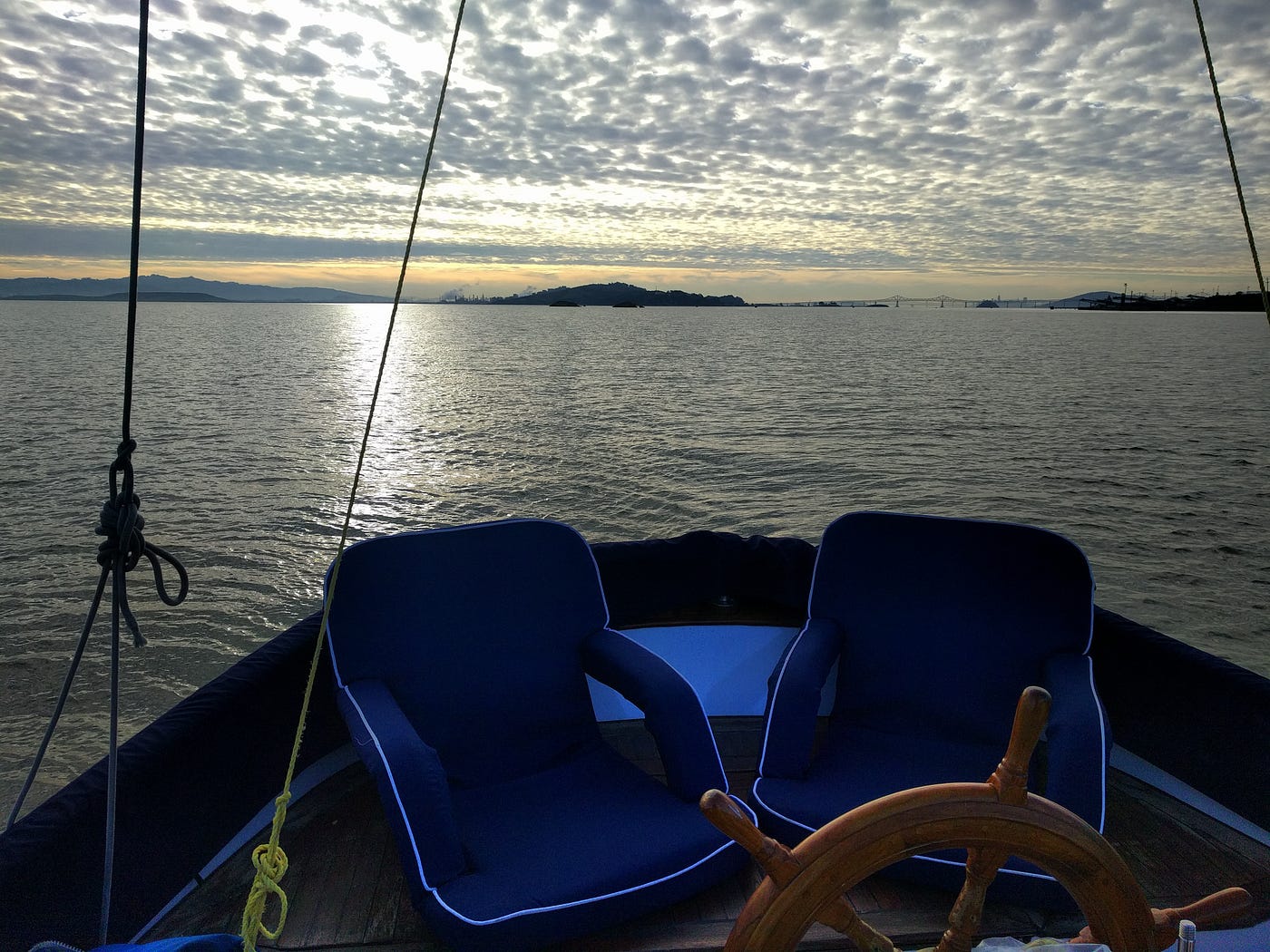
When I tell people I live on a sailboat, they often picture a romantic scene: a boat gently rocking in waves tinged orange with the setting sun, white wine and a plate full of Gruyère cheese, seeded crackers and glistening red grapes. But in reality, living on a sailboat is hard — sort of like camping, and sort of like traveling by covered wagon.
I have been living on a boat in the Bay Area since March of 2016, when I was first laid off from my job as a news reporter at KGO Radio. When that happened, paying $1,450 for rent plus utilities was suddenly out of the question, so I gave my landlord notice. Luckily, I had a backup plan: my boyfriend invited me to move in with him on his 41-foot sailboat, which he’d just brought down from Canada to restore. I spent April shedding my belongings, and by May, I was officially living on the boat, a small space maybe 200 square feet in size at best, and paying only a few hundred dollars per month in rent and utilities. (Our utility bill maxes out at about $6 per month.)
At first, it felt like an adventure. We had no running water. No bathroom. No refrigeration. No stove. It was like glorified camping, but instead of canvas for walls, we had teak. Instead of a forest, we had the ocean and the sky. And instead of curling up on a couch with a good movie, we curled up on our tiny bed and hung tightly onto hope — that is, that the restoration would go fast. That we’d be able to cook dinners on a simple camping stove. That we’d be able to make it to the bathroom on the other side of the marina in time.

One day my boyfriend and I spent hours putting in new plastic pipes for water. It was hard work. Our bodies had to contort into strange shapes to allows us to see under the floorboards to unhook the old lines and attach the news ones. Fresh, running water is just one of many things I will never again take for granted. When I leave the boat to visit family, I appreciate the Internet, a bathtub, television with cable, a refrigerator, and a stove and oven that can be used at the same time.
Living on a boat is a great test of simplicity. How small can you live? What can you do without? What are you willing to give up? I realized I’m willing and able to give up a lot. And that, in and of itself, is empowering.
Even though it sounds like a hardship, living on a boat also comes with a lot of positives. We’re closer to nature and have direct contact with the outside: we know and feel when it’s rainy or windy, or cold or warm. We see egrets and seals and sometimes fish leaping above frothy waves. We have the freedom to move our home from the marina to China Camp to Angel Island to Sausalito. It’s nice that when we need a change, we just let the mooring lines loose and go.

Eventually, our boat life will be more like glamping than camping. Someday we’ll have a toilet, a shower and refrigeration. Every piece will be in its place, and we’ll be ready to take this beauty out and batter its hull in waves outside the Golden Gate, catch fish near the Farralons, anchor near Point Reyes and go on trips to the Channel Islands.
Living on a boat isn’t for everyone. You need a certain mechanical know-how; it helps that my boyfriend is an electrician and a contractor. And trust me, boats require a lot of work and often a lot of expense. There’s an old saying in the boating community: “The best day in a boat owner’s life is the day he buys a boat, and the day he sells it.”
Perhaps eventually, life on the boat will mimic that romanticized vision. Bundled up, we’ll drink white wine on the stern as the sun sets over the Marin Headlands while a pot roast simmers in the oven — then we’ll set sail, and the world will be our oyster.







